Photographs: By Special Arrangement
The abortive attempt on Sri Lanka army chief Lieutenant General Sarath Fonsenka by a suspected pregnant LTTE woman cadre inside the military headquarters in April 2006 in a way can be termed as the beginning of the last war fought by the LTTE under Prabhakaran's command. A seriously injured Fonseka escaped death by a whisker and spent the next five months in hospital.
Rajapakse, who was elected as president in November 2005, had fought the election against his rival and former prime minister Ranil Wickremesinghe on the plank of wiping out terrorism from the island nation and the military defeat of the LTTE. Ironically, the Tigers helped Rajapakse's ascent to the most powerful position in Sri Lanka by its diktat to the Tamils, who traditionally supported Wickremesinghe's party, to boycott the election. Despite this generous help from the LTTE, Rajapakse won the election only by a margin of 150,000 votes.
He got the much needed opportunity to launch a military offensive against the Tigers in August 2006 when the LTTE blocked the sluice gates of an irrigation canal in the east over a dispute with the government on execution of a development project in the province.
What began as a fight between the government and the LTTE over the canal issue escalated into a full-fledged war. It was the beginning of the end of the LTTE with the military notching one victory after the other.
Colombo-based journalist B Murlidhar Reddy of The Hindu has covered these extraordinary times with a high degree of professionalism. Reddy was the only foreign print media journalist to witness the last phase of the war from inside the war zone.
He spoke exclusively to rediff.com's Sheela Bhatt about how the Sri Lankan government fought the battle against the LTTE with single-minded determination, sound military strategy and patriotic fervour.
The first flashpoint that lead to the LTTE defeat
Image: Exclusive images from the No Fire Zone in northern Sri Lanka, where the last battle was foughtPhotographs: By Special Arrangement
The tussle over the canal was the first flashpoint that has now ended in the decimation of the LTTE.
The government chalked out a plan to get aggressive. In just a few days, on August 10, 2006, the government closed highway A-9 that connected Jaffna to Colombo. In one stroke that decision affected some 600,000 Sri Lankans who were completely got cut off from the rest of the world.
A-9 is not an ordinary highway. It was a cash-cow for the LTTE. Every item that entered north of Killinochi from the south and mid Sri Lanka was taxed by the LTTE.
The money collected on A-9 was the main source of finance for the LTTE. Their military was strengthened from the tax collected from A-9. The government erected their own entry and exit points on A-9. It was a huge blow to the Tigers.
The LTTE understood the game. On August 14, 2006, two very important events took place. Pakistan High Commissioner retired Colonel Bashir Wali was unsuccessfully attacked.
The same day the government conducted an aerial raid on a school in Mullaitheevu district; 53 girls were killed. The government defended the action, saying the school was training 'suicide bombers'.
In December 2006, a suspected LTTE suicide bomber rammed an autorickshaw into a convoy with Sri Lanka Defence Secretary Gothabaya Rajapakse, the president's brother. He had retired from the Sri Lanka military two decades ago and ran a store in the US. A green card holder, Gothabaya returned to the island at the government's invitation to take over the defence establishment.
The Gothabaya Rajapakse-General Fonseka combination proved lethal for the LTTE. In early 2007 the Rajapakse government took a clear and firm decision that the time had come to hit the LTTE in its heartland.
The east liberated, the LTTE pushed back
Image: As the LTTE retreated deeper, the Lankan army followedPhotographs: By Special Arrangement
The army first neutralised those areas and safeguarded its military assets. Around July 2007 the operation to liberate the eastern province from the LTTE was completed.
Even as the military operations in the east were on, the Rajapakse government marched a brigade to Mannar to take on the LTTE. The east was declared as 'liberated' in July 2007. Another operation commenced in September 2007 from Vavunnia in the north-east.
It was obvious that because of the frontal attacks, the LTTE went deeper and deeper into the Wanni area, perhaps as part of its so-called 'strategic retreat'.
The confrontation went on and on and on. The LTTE would normally know when the major attack would come, so a week or so earlier they would retreat from the area along with the entire population.
They safeguarded themselves with the 'people.' The Tamils in these areas have always found the Lankan army racist in its approach. They have been indoctrinated by the LTTE that only the Tigers could save them.
As the military offensive began some 300,000 people took a decision to stay with the LTTE and not the military. They took their jewellery, children and belongings to move along with the LTTE. They had faith in the LTTE's invincibility.
In March 2007, the LTTE conducted a stunning operation that may have influenced the Tamil population's decision. Two members of the LTTE's Black Air Tiger suicide squad flew two light aircraft, carried out a daring attack and returned to LTTE territory. The LTTE released photographs of the pilots with Prabhakaran. The world took notice of the LTTE's airpower.
The beginning of the end
Image: The Lankan army had cornered the LTTE from all sides -- land and seaPhotographs: By Special Arrangement
The army resorted to all out war. They didn't succumb to public concerns, outside opinion and marched on. In the last week of September 2008, the government directed non governmental organisations and United Nations agencies to quit Tiger-held territory on the ground that their safety could not be guaranteed. They set a deadline for people to escape to safer areas.
From all quarters pressure was applied on the Lankan government and military, but they went on. By October-November 2008, the real war started. It was a full scale operation supported by planning, strategy, resources, intelligence and passion.
The first turning point and the beginning of the LTTE's end was there for the world to see when Killinochi fell. On his birthday (November 27), in his Heroes Day speech, even Prabhakaran said, 'The land of Tamil Eelam is confronted with an intense war as never before. Rearing its head in different parts of Wanni, the war is gathering momentum. As the Sinhala State is committed to a military solution, the war is becoming intense and widespread.'
'This war has affected Tamil civilians more than anybody else,' he said. 'By turning the heat of war on our people and by burdening them with immeasurable sufferings, the Sinhala State is aspiring to turn our people against the LTTE.'
It was quite clear that the pressure was on the LTTE. He praised India in that speech. 'I wish to express my love and gratitude at this juncture to the people and leaders of Tamil Nadu and the leaders of India for the voice of support and love they have extended. I would cordially request them to raise their voice firmly.' The message was a petition to India to help him out.
300,000 people moved along with Prabhakaran
Image: The remnants of the LTTE hideoutsPhotographs: By Special Arrangement
December 31 and January 1, 2008, Killinochchi was under the army's control. Weeks before the military marched into Killinochchi town, the LTTE's administrative and political headquarters, the Tigers had moved to other areas. The Sri Lankan army moved into a deserted and desecrated Killinochchi. Barring dogs and cows, the town was left with no human body or soul.
Prabhakaran, the LTTE and Tamils had shifted to Mullaitheevu much before the military arrived in Killinochchi. The military shifted its focus to Elephant Pass which was with the LTTE since 1996. This was very important because it is the entry point to Jaffna.
Prabhakaran tried all ways to drew the world's attention to the plight of 300,000 people. He kept saying it is a genocide against the Tamils.
Back in India no one else but CPI leaders went on a fast in Chennai on October 2, demanding an end to the war on the ground that it was costing too many people's lives. Karunanidhi did his bit by putting pressure on the central government. He forced the government to act before the deadline. He said his ministers would resign if the military offensive against the Sri Lankan Tamils was not reduced. Rajapakse gave a favourable response in words, but the march of his military went on.
The Sri Lankan military's speed was unthinkable for the LTTE.
Mullaitheevu town was captured on January 25.
The actual war accelerated after this date. It was a ferocious war fought by the Sri Lankan army against its own rebels and people. From Mullaitheevu town, Prabhakaran moved people to Puthukkudiyiruppu.
The war here was different from other battles. In Killinochchi and Mullaitheevu, the Tamils retreated or escaped and left behind a ghost town, but in Puthukkudiyiruppu the battle was fought between the LTTE and army and the casualties on both sides were believed to be high.
The Tigers lost most of its fighting force in this battle along with several middle rung leaders. The town was turned into rubble. The LTTE had built some 100 km long earth-walls cum ditches up to 12 feet deep to stop the army's march.
Walls were built to stop the people from moving out and to prevent the army from getting in. Imagine what kind of effort must have gone in before the LTTE was defeated.
The idea was to get the advantage of height and depth, but the LTTE was defeated soon. The LTTE never expected the army would breach the earth walls so quickly.
The Lankan army's final push
Image: The Lankan army crushed the LTTEPhotographs: By Special Arrangement
From April 20 to 23, over 125,000 civilians fled from the Tigers's clutches and went over to the government side.
The Lankan government described it as the single largest hostage rescue mission ever undertaken in the world. Daya Master, George Master and other senior Tiger officials and other LTTE men surrendered. The people were hungry, tired, defeated, destroyed, and scared.
This was the defining moment when Sri Lankan Tamils emerged from the war zone. The LTTE and thousands of people were shrunk into a 12 square km area. The entrapment was real, but they didn't surrender.
Outside the war zone the government declared 20,000 people were with the LTTE. UN agencies estimated the figure at 50,000, but there were actually 70,000 people with the Tigers.
Meanwhile the election was on in India and the voting for the first phase ended on April 16. On April 27, to help decrease the Dravida Munnetra Kazhagam's pressure on the Congress-led government, President Rajpakase issued a cleverly drafted statement that his government's military objective was over and the focus was now entirely confined to rescue people. He said the army would not use heavy weapons.
On May 11, when Sonia Gandhi held a rally along with Karunanidhi, the Sri Lankan military went on a big offensive and shrunk the area under the LTTE's control to 5 square km. Voting in Tamil Nadu concluded on May 13.
From May 14, the military applied maximum pressure on the Tiger cadres and leaders holding onto the last stretch of land they were boxed in. After being encircled, the Tigers had no option but to let the remaining civilians escape from the area.
In less than 24 hours, President Rajapakse, who was at the G-11 summit in Jordan, declared that the LTTE was defeated and that in 48 hours his government would finish its humanitarian operation of the last stretch.
The LTTE understood that the end had come, the game was over. Probably, Prabhakaran and a few of his men were in the last 500 square metre area. On May 15, 16 and 17, the last bunch of 70,000 people came out.
The army captured LTTE sea-war expert Soosai's wife, son and relatives while fleeing the island via the sea. It was the first sign that Prabhakaran had lost control over the organisation, and even his senior comrades were contemplating escape.
At the last minute the president made an offer from Jordan through the Red Cross that the government was ready to accept the surrender of the LTTE top brass. It is not clear what actually happened in the negotiations.
Perhaps the Tiger top brass wanted to surrender to a third party and it was not acceptable to the military. The time had passed for every sane action.
On the morning of May 19, the LTTE's elite commandos and suicide squads fought their last battle. All of them were killed on the battlefield. Prabhakaran's bullet-ridden body was recovered by the Sri Lanka military in the early hours of May 19. Within hours his former trusted commander Colonel Karuna flew down and confirmed his identity.
One bloody chapter of history of this small nation ended that day, May 19, 2009.

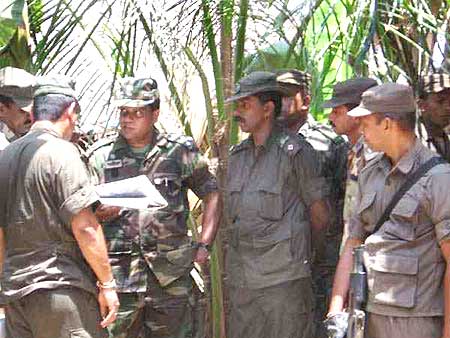
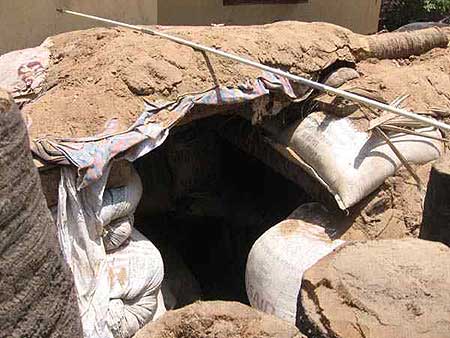
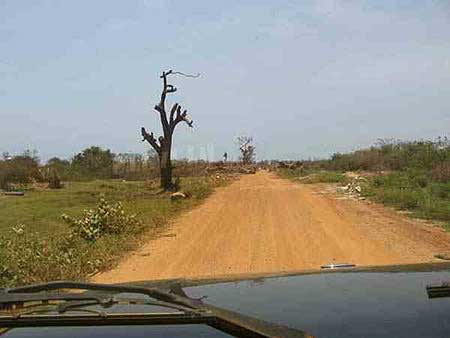
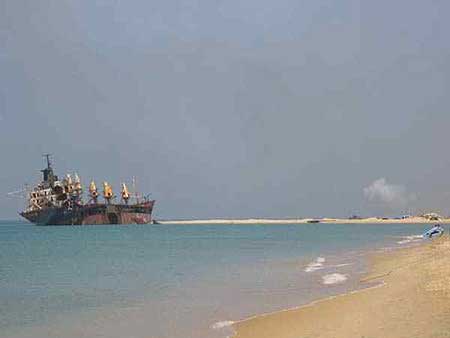

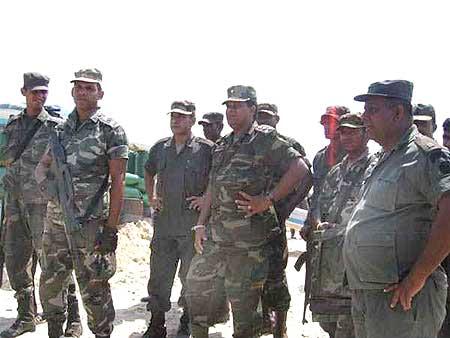
article